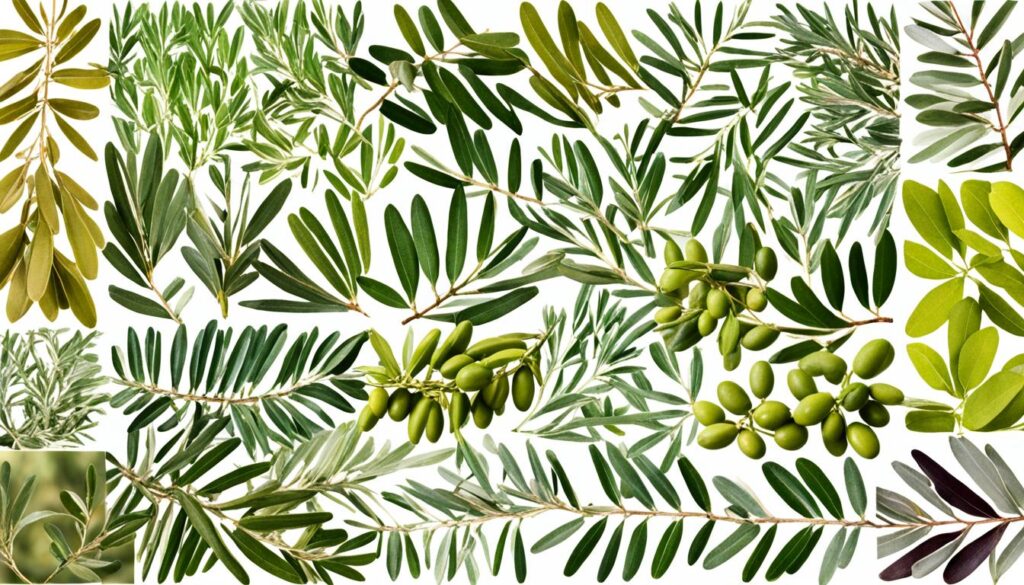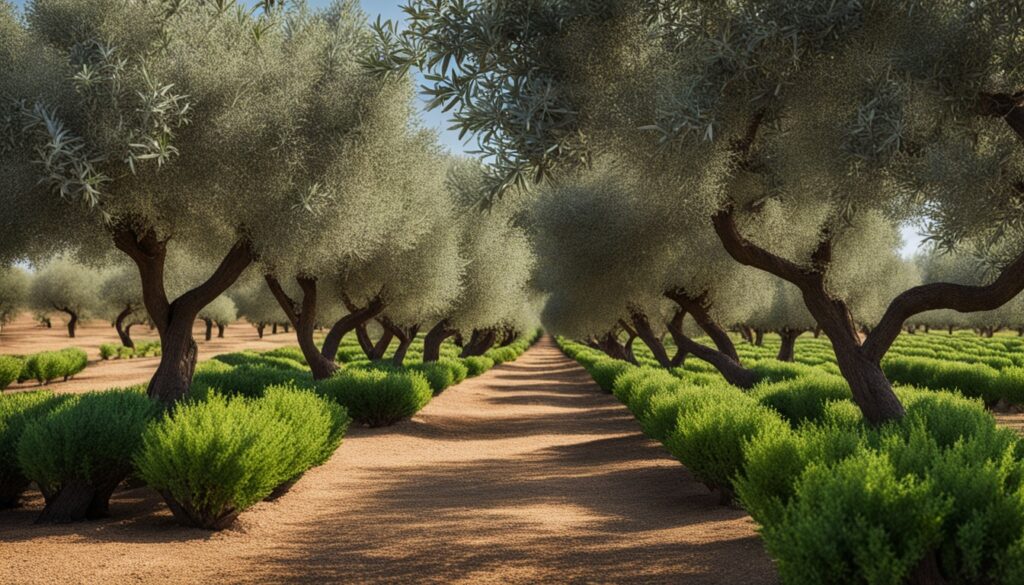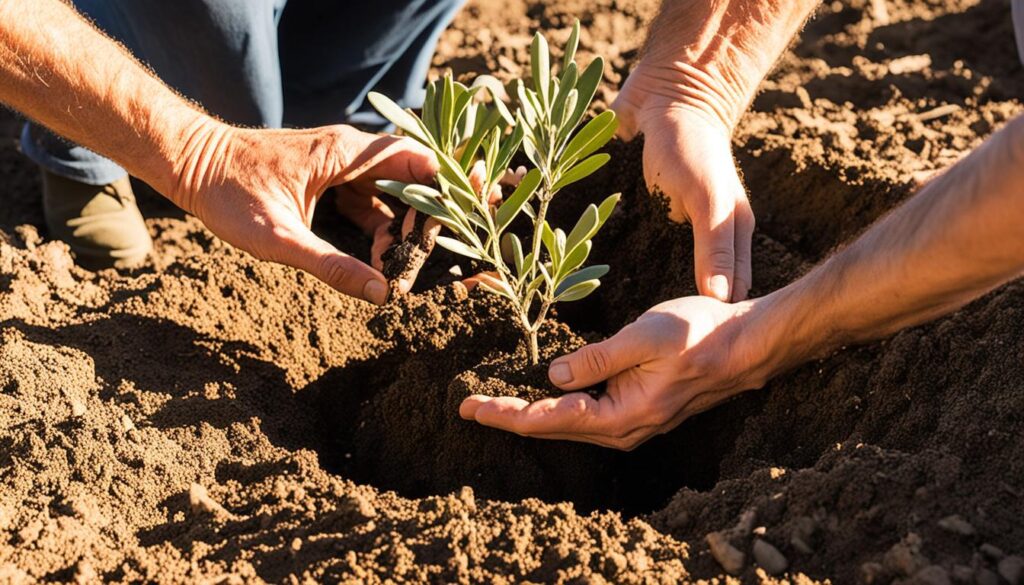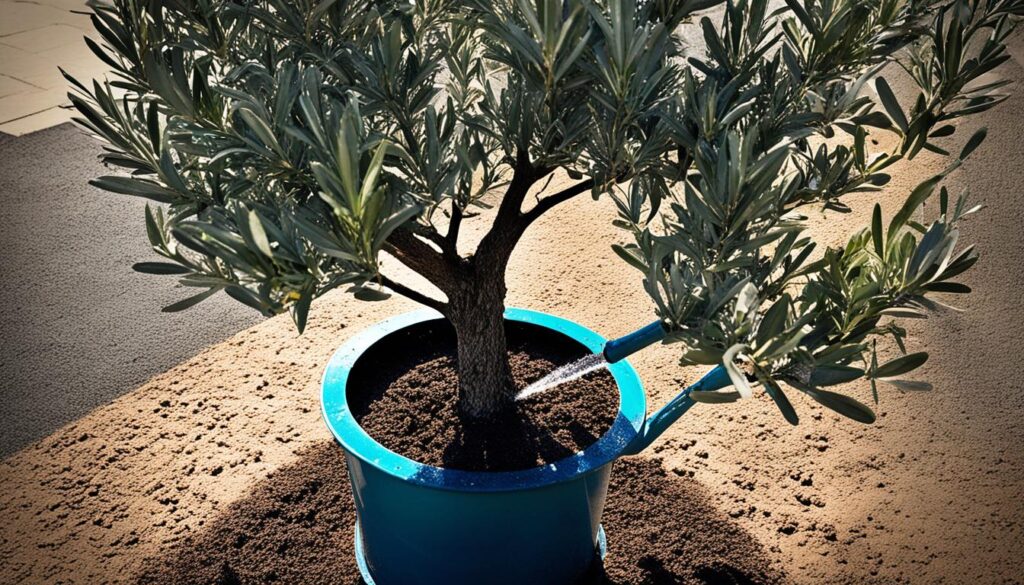
Have you ever dreamed of growing your own olive trees? They bring the essence of the Mediterranean to your backyard. Olive trees are loved for their tasty fruit and their beauty. They have silvery leaves, gnarled trunks, and fragrant flowers.
These trees do best in warm, Mediterranean climates. But, you can grow them in many places by knowing how to care for them. Are you ready to start your olive tree gardening journey?
Olive trees are among the oldest trees grown by humans. With the right care, they can make your garden look beautiful. There are many types of olive trees, from small ones for containers to big ones for your yard.
Whether you want to make your own olive oil or just enjoy the tree’s look, this guide will help you. It will teach you the basics of growing olive trees well.
The Basics of Olive Tree Cultivation
Olive trees have a long history, starting in ancient Greece. These trees are loved for their tasty fruit and beautiful looks. They have silver-green leaves, twisted trunks, and smell like flowers in spring. These trees are a sight to see all year.
Origins and Ornamental Attributes
Olive trees do well in sunny places with hot summers and cool winters. They like soil that drains well and is a bit acidic or alkaline. They can handle drought but grow better with regular water.
There are over 1,000 olive varieties worldwide. Gardeners can pick from many, including trees that don’t produce fruit.
Growing Conditions and Varieties
- Olive trees grow best in USDA zones 8, 9, 10, and 11.
- They like soil that drains well and is a bit alkaline, with a pH of 5.0 to 8.5.
- Once they’re grown, olive trees can handle drought. But, they need water during dry times.
- There are many olive tree types, including ones that pollinate themselves and don’t make fruit.
| Olive Tree Variety | Characteristics |
|---|---|
| Manzanilla | Known for its large, green olives and high oil content. |
| Kalamata | Prized for its rich, fruity flavor and purple-black olives. |
| Arbequina | A compact, self-pollinating variety with small, sweet olives. |

Knowing about origins, ornamental attributes, growing conditions, and variety options helps gardeners choose the right olive trees. This way, they can grow these beautiful and useful plants in their gardens.
Choosing the Right Olive Tree Variety
When selecting olive tree varieties for your garden, think about the climate, growing conditions, and what you want. Arbequina is a good pick for home gardens because it doesn’t need another tree to pollinate.
If you like the look of olive trees but don’t want to deal with olives, fruitless olive trees are perfect. Wilsoni and Montra types look great but don’t produce olives.
When picking an olive tree cultivar, think about your area’s climate and what you like. Some, like Frantoio and Leccino, do well in cooler places. Others, such as Manzanillo and Mission, like it warm. Look into each variety to find the best fit for your garden.

The best olive tree for your garden depends on your climate, how you want it to look, and what you plan to use it for. By thinking about these things, you can pick the perfect olive tree to make your garden look and work better.
Proper Planting for Olive Trees
Planting olive trees at the right time is key. The best time is in spring, after the last frost. This lets the tree grow roots before the dry summer.
Choose a spot with good drainage and lots of sun. Olive trees do well in these places.
Planting Techniques and Considerations
To plant an olive tree right, start by digging a hole. Make it twice as wide as the roots but not deeper. Carefully take the tree out of its pot and straighten any roots that are curled.
Put the tree in the hole, making sure the roots are at soil level. Fill the hole with the same soil, don’t add any extra stuff.
- Water the olive tree well after planting to help it grow roots.
- Keep weeds away from the olive tree to help it grow.
- Use organic mulch to keep the soil moist and stop weeds.
- Don’t prune the olive tree too much for the first few years. This lets it grow strong.
Olive trees need certain conditions to grow. They like a pH of 5.5 to 6.5 and 6 to 8 hours of sunlight a day. With the right planting tips, you can grow a healthy olive tree in your garden.

Watering Olive Trees: How Much and How Often
Watering your olive trees right is key to their health and fruit production. Olive trees can handle drought, but regular watering in the growing season boosts fruit yield.
Water your olive tree once a week or every 10 days. Give it about an inch of water each time. Drip irrigation is best because it waters the roots directly. This method keeps the leaves dry, which helps prevent diseases.
- Not enough water makes new growth wither and leaves turn light green or yellow.
- Too much water makes leaves look green but they’re weak.
- Long-term lack of water can shrink the tree and shorten its life.
Keep watering like this in spring and summer, when olive trees grow the most. Change how often and how much you water based on your area’s weather and soil.
| Soil Type | Watering Needs |
|---|---|
| Sandy Soils | Need more water because they drain quickly. |
| Clay Soils | Hold water well, so they need less water. |
To keep water in the soil, add compost or organic matter to your soil. Testing your soil can also show how well it drains. This helps you adjust your watering.

Olive trees in pots or on balconies need different care. For indoor trees, wait until the top inch of soil is dry before watering. Mist the leaves to keep them moist. For balcony trees, make sure they get 6 hours of sun and let the soil dry out before watering again.
Pruning Olive Trees for Optimal Growth
Proper pruning is key for your olive trees’ shape and productivity. Start with light pruning in the second year after planting, removing weak or unwanted branches. Then, prune every spring, focusing on removing last year’s fruiting shoots and new growth. This helps the tree focus on next year’s fruit.
Pruning Techniques and Timing
For young olive trees, pick three or four laterals to shape the tree like a cocktail glass. Keep shaping the tree as it grows. When mature, prune to keep its vase-like shape. This shape lets sunlight reach the fruit, helping it ripen.
Prune your olive trees in spring or early summer, after they start to open flower buds. This helps the tree focus on next year’s olives. Don’t prune in winter, as it can stress the tree and lower its vigor.
You’ll need loppers and pruning shears for pruning. The pruning needs vary by olive tree type. Some olive trees grow fast and need a lot of pruning. Others grow slower and need a more careful pruning plan.

It’s smart to have a pruning plan for your olive trees over several years. Knowing how each tree grows and looks is key to pruning olive trees well. This way, your olive trees can reach their best potential.
Growing Olive Trees Indoors
Olive trees can do well in containers, making them great for indoor growing. They’re perfect if you don’t have much outdoor space or want to enjoy an olive tree all year. With the right container and care, your indoor olive tree will do great.
Container Selection and Potting Mix
Pick a pot that’s a bit bigger than the nursery container and make sure it has good drainage holes. This stops water from building up and hurting the tree. Use a potting mix made for cacti or succulents, with gravel or sand added for better drainage.
Sunlight and Temperature Requirements
Olive trees need a lot of sun, at least 6-8 hours a day. Place the container near a sunny window to get enough light. Keep the tree warm, above 25°F, as it can’t handle frost or freezing.
With the right pot, soil, and sunlight, you can grow olive trees indoors. They’ll have beautiful leaves and might even produce fruit.
- Olive trees grown indoors live about 8-9 years, less than those outside.
- They need at least 6 hours of direct sunlight a day to grow well.
- Keep your olive tree in a room with temperatures between 65-80°F.
| Olive Tree Care Tip | Recommendation |
|---|---|
| Watering | Water when the top inch of soil is dry, but be careful not to overwater. |
| Fertilization | Fertilize monthly with a balanced, slow-release houseplant fertilizer during the growing season. |
| Pruning | Prune in the spring to encourage bushy growth, cutting above a leaf node at a 45-degree angle. |
| Repotting | Repot every 2-3 years or when roots reach the container’s sides. |
Olive Trees and Fertilization
Olive trees need the right food to grow well and give lots of fruit. Giving them the right food is key, especially after their first year. By knowing what they need and using the right food, your trees will stay healthy and give lots of fruit.
A balanced, slow-release fertilizer with a 10-10-10 ratio is great for olive trees. It gives them nitrogen, phosphorus, and potassium. These are key for growth and health. Use this fertilizer every 2-4 weeks when they’re growing, but don’t give it too late in summer. This can make new growth that might freeze.
Always read the fertilizer instructions and keep it away from the trunk. This makes sure the tree gets the nutrients it needs and doesn’t get harmed.
| Nutrient | Recommended Range |
|---|---|
| Nitrogen (N) | 1.50-2.20% |
| Phosphorus (P) | 0.10-0.20% |
| Potassium (K) | 0.75-1.50% |
| Magnesium (Mg) | 0.25-0.50% |
| Calcium (Ca) | 2.00-2.50% |
| Sulfur (S) | 0.20-0.35% |
By following these tips and fertilizing regularly, your olive trees will get what they need. This will help them grow well and give you lots of fruit.
Harvesting and Enjoying Your Olive Trees
Olive trees start giving olives after 3-6 years. The journey from green to blackish-purple is exciting. Harvesting and enjoying the olives is a special moment.
Watch for when olives are ripe at the end of the season. Ripe olives taste bitter. They need to be brined and cured before they’re tasty.
Harvesting Olives: A Tradition Steeped in History
Olive harvesting is a long-standing tradition. In Italy, they use brucatura to pick olives into baskets. This method keeps the olives’ quality and taste.
In Greece, people use bamboo canes or vergas to get the olives. This method is a community event. It brings people together and shares stories.
In California, harvesting starts in late August and goes till November. They use both hand and machine picking to keep quality high.
Curing and Enjoying Olives
After picking, olives need to be cured. They are too bitter to eat right away. So, they’re brined and cured to taste rich and savory.
Enjoying your olives, whether as table olives or olive oil, is rewarding. It connects you to olive history and traditions. It’s a tasty way to enjoy your hard work.
Olive Tree Care and Maintenance
Olive trees are easy to care for once they grow. But, they still need some attention. Keep an eye out for pests or diseases and fix any problems fast.
Prune your olive tree every spring to keep it the right size and shape. Feed it balanced fertilizer every two weeks from spring to fall. This helps it grow strong.
Water your olive tree regularly, especially in the summer. Water it when the top two inches of soil feel dry. Give it four cups of water each time. With the right care, your tree will live long and give you lots of olives.
Make sure your olive tree gets at least six hours of sunlight a day. Plant it in soil that drains well, like sandy or loamy soil. The soil’s pH should be between 6.0 and 8.0. Follow these tips to make your tree healthy and productive for many years.



